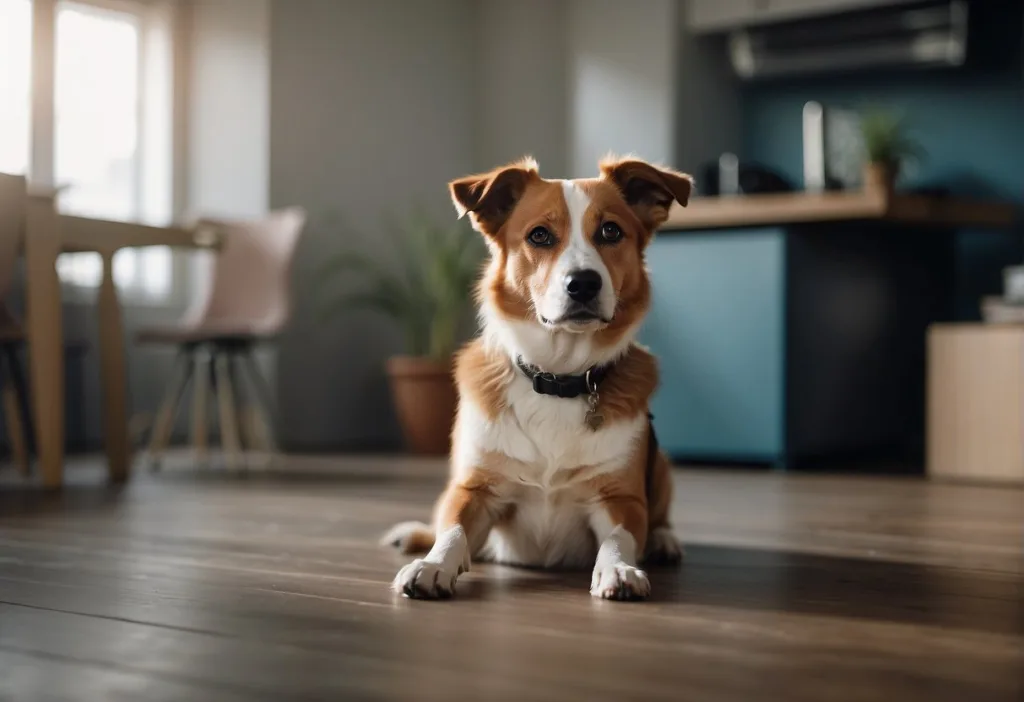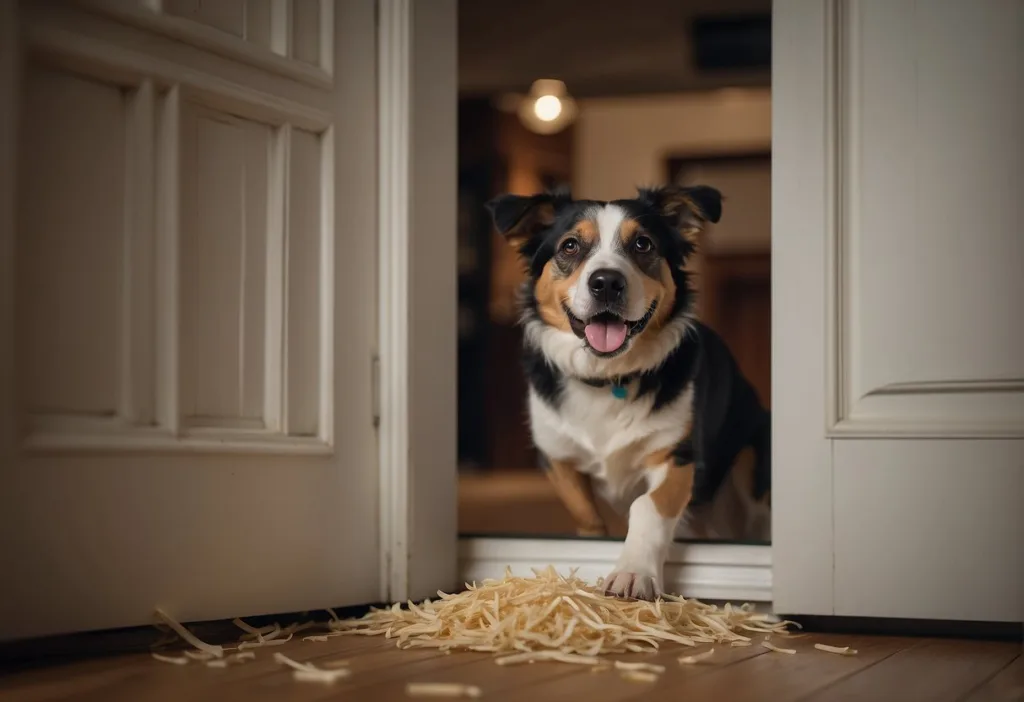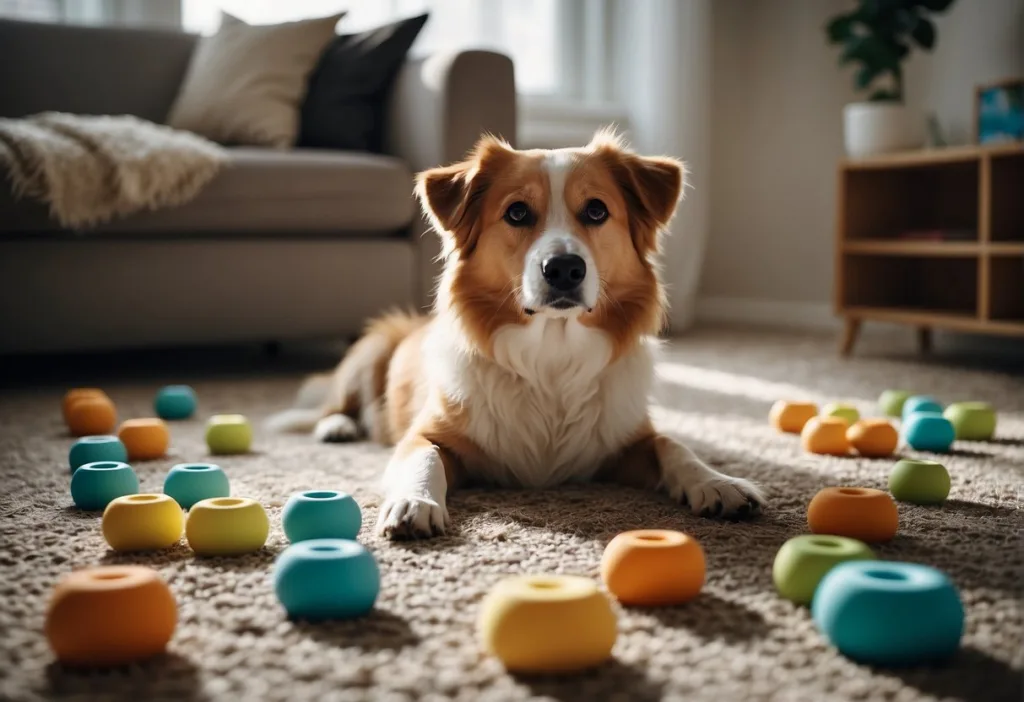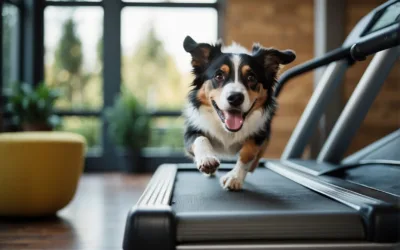Tips for Helping Dogs with Separation Anxiety: Proven Strategies for Pet Owners
Separation anxiety can be a distressing experience for both dogs and their owners, manifesting through various behaviors when you, the pet parent, are away. It’s a condition in which a dog exhibits stress and anxiety when separated from its family members, often resulting in unwanted behaviors such as excessive barking, chewing, and even attempts to escape. Understanding your dog’s emotional needs is crucial to mitigate these symptoms and help your canine companion feel more secure.
Managing and alleviating your dog’s separation anxiety requires patience, consistency, and a series of steps tailored to your dog’s specific anxieties. You should aim to create a calm and safe environment, establishing a routine that includes desensitization to your departure cues. Reassurance and positive reinforcement are key components in helping your furry friend cope with time apart from you. Addressing separation anxiety is not just about reducing unwanted behavior—it’s about enhancing your dog’s quality of life and the bond you share.
Understanding Separation Anxiety
Separation anxiety in dogs manifests as stress-related behaviors when they are left alone or separated from their owners, indicating a level of distress that goes beyond typical boredom or mild discontent.
Recognizing the Signs
To help your dog, it’s crucial to recognize the signs of separation anxiety. Common indicators include:
- Pacing: Restless movement often in a fixed pattern.
- Whining or Howling: Vocalizing distress in a repetitive manner.
- Chewing or Destruction: Targeting furniture or personal items in your absence.
- Urinating or Defecating: House-trained dogs may relieve themselves indoors.
- Drooling or Panting: Excessive salivation or breathing issues not related to heat or exercise.
These behaviors are often signs of anxiety, not just bad habits, especially if they only occur when your dog is alone.
Exploring the Causes
Various factors may contribute to your dog’s separation anxiety. Potential causes include:
- Boredom: Lack of mental and physical stimulation can lead to stress behaviors.
- Traumatic Events: Adoption, changing families, or losing an owner can trigger anxiety.
- Fear: Past experiences may cause your dog to fear being alone.
Understanding the root cause can be challenging, but it’s a crucial step in addressing separation anxiety effectively. Addressing the causes of your dog’s stress will be key to finding relief for them.
Professional Assessment and Treatment

When addressing separation anxiety in your dog, enlisting the help of professionals can be invaluable. They offer a combination of expertise in veterinary medicine and animal behavior, ensuring that any treatment plan is tailored to your dog’s specific needs.
Consulting a Veterinarian
Begin by scheduling an appointment with your veterinarian. They can determine if your dog’s anxiety has a medical component, ensuring that issues such as hormonal imbalances or other health concerns aren’t contributing factors. Your vet may discuss the use of medication as a part of the treatment plan to alleviate anxiety, which could include anti-anxiety drugs or supplements that support calm behavior.
Working with an Animal Behaviorist
If the anxiety persists, consider consulting with a veterinary behaviorist or animal behaviorist. These professionals specialize in behavior problems and can develop a comprehensive behavior modification plan. Often, behaviorists will work with you and a professional dog trainer to implement techniques that reduce anxiety, such as desensitization and counter-conditioning.
Behavioral and Training Strategies

In addressing separation anxiety in dogs, a blend of routine setting, desensitization techniques, and behavior modification methods can be instrumental. Establishing predictability, gradually acclimating your pet to solitude, and reinforcing preferred behaviors are at the core of these strategies.
Establishing a Routine
Creating a consistent daily schedule provides your dog with a sense of security. Start with setting regular feeding times, walks, and play sessions. Your predictability makes departures less stressful. It’s important to keep your greetings and farewells low-key to avoid heightening anxiety around your coming and going.
Desensitization Techniques
Desensitization aims to reduce your dog’s anxious response to being alone. Begin by leaving your dog alone for just a few minutes and gradually extend the duration as your pet becomes more comfortable. Linking your departure to something positive—like giving out a special toy or treat—can help alter your dog’s emotional response over time.
Behavior Modification Methods
Through positive reinforcement training, you can encourage calm behavior by rewarding your dog when they exhibit it. Tools such as treat-dispensing toys can keep them occupied and content while you’re away. It’s vital to never punish a dog for anxiety-driven behaviors; instead, focus on teaching and rewarding alternative, desirable actions.
Environmental Enrichment

Strengthening your dog’s environment is a powerful way to alleviate the stress they may feel when left alone. By incorporating specific toys and activities, you can provide essential mental stimulation that keeps their mind actively engaged.
Providing Mental Stimulation
Mental stimulation is paramount in preventing and reducing separation anxiety in dogs. You can achieve this through various means, such as:
- Scent games: Hide treats around the house for your dog to find, igniting their natural foraging instincts.
- New commands: Teach your dog new tricks or commands; it’s a productive way to exercise their brain.
Using Interactive and Puzzle Toys
Toys are not just for play; they are tools for engagement and learning. Specifically:
- Puzzle toys: These require your dog to solve a problem to receive a reward, such as a treat or their meal. They come in varying levels of difficulty for all ages and stages.
- Interactive toys: These can move or make noise either randomly or when touched, encouraging your dog’s natural hunting instincts.
Remember, the key to using these toys effectively is variety. Rotating toys can prevent boredom and keep your dog guessing what challenge is next.
Managing Anxiety and Stress

Managing your dog’s anxiety and stress involves a combination of physical activities and, if necessary, medical intervention. It’s important to address both to help reduce your dog’s stress hormones and modify their stress response effectively.
Exercise and Activity
Regular exercise is crucial for maintaining your dog’s mental health and mitigating anxiety. An active routine can significantly reduce stress levels, burning off excess energy that might otherwise fuel anxious behaviors. Commit to daily walks, runs, or play sessions. These activities not only strengthen your bond with your dog but also stimulate their mind and body, promoting a sense of calm.
- Recommended Daily Activities:
- Long walks or hikes
- Playtime with toys or other dogs
- Interactive games that challenge mentally, such as hide and seek or puzzle toys
Medications and Natural Remedies
If exercise alone isn’t enough to manage your dog’s anxiety, consult your veterinarian about medications and natural remedies. Prescription anti-anxiety medications can be effective for severe cases, helping to regulate the emotional response during stressful situations. Additionally, various natural remedies, such as calming supplements or pheromone diffusers, may provide relief.
- Medication Options:
- Prescription Medication: May include SSRIs or benzodiazepines
- Over-the-Counter Supplements: Often contain ingredients like L-Theanine or melatonin
Remember, every dog is different, so it might take some time to find the right combination of exercise and medical support that works best for your furry friend.




Recent Comments